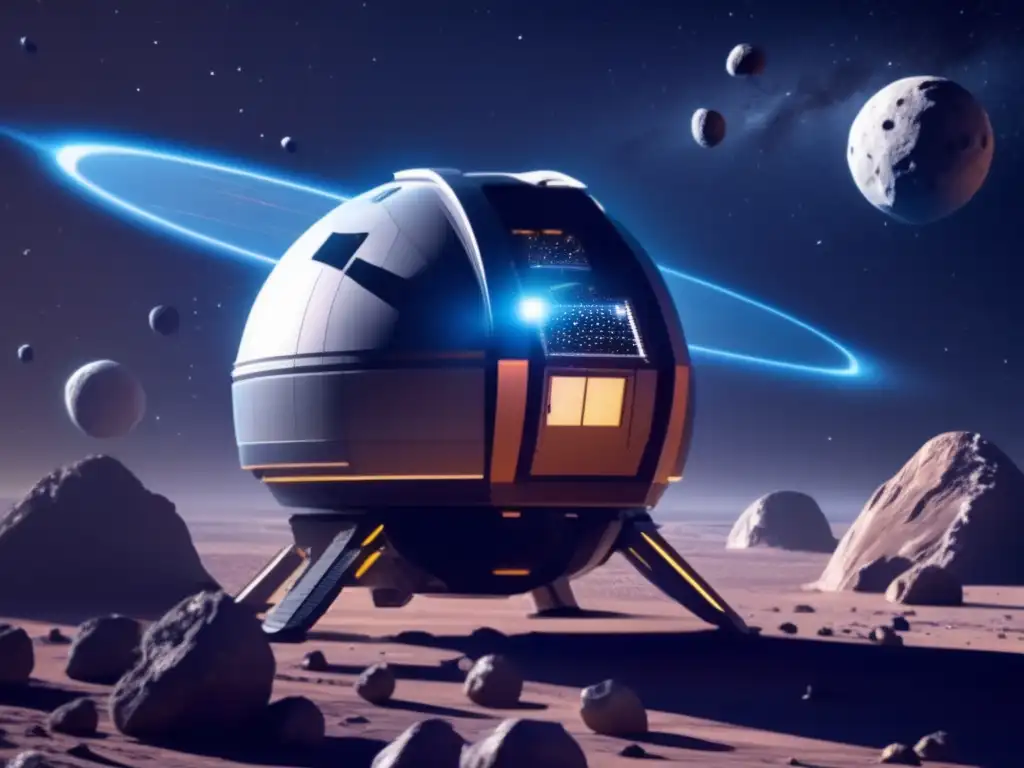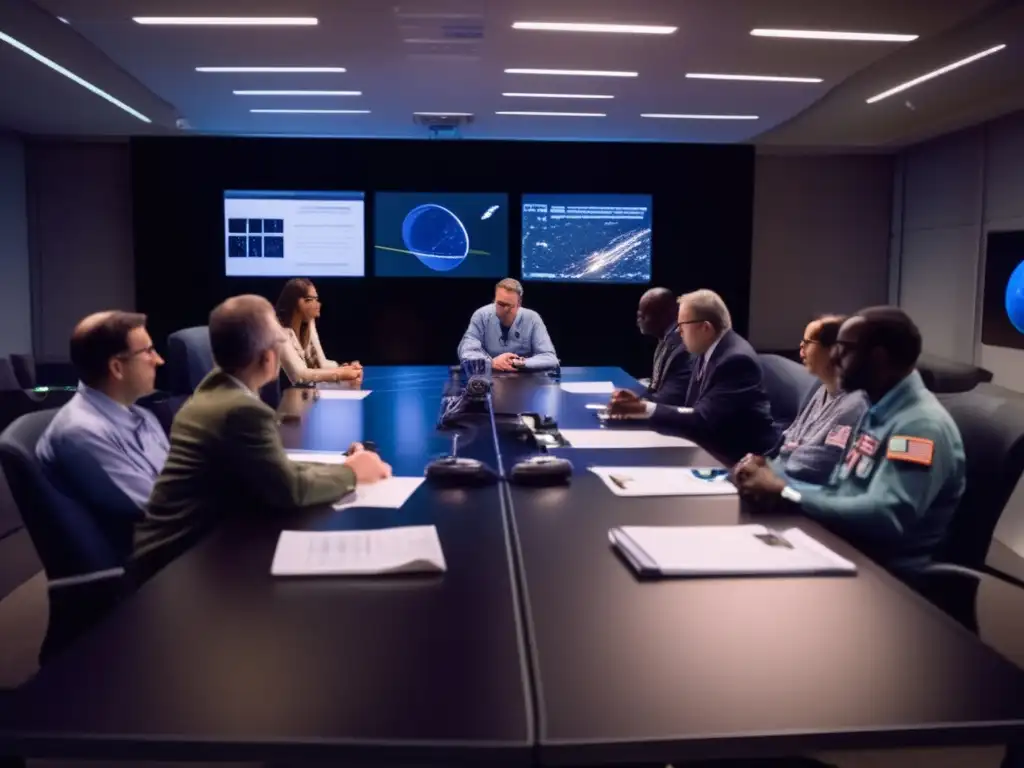Averting Apocalypse: Current Strategies In Asteroid Defense

Introduction
Asteroids have been a subject of fascination and wonder for humans for centuries. However, as much as these celestial bodies can be a source of beauty, they can also pose a serious threat to our planet. A single large asteroid impact could cause widespread destruction, loss of life, and even the extinction of species. As a result, scientific efforts have been put in place to develop strategies for identifying, tracking, and deflecting asteroids that may pose a threat to Earth. This article will provide an overview of the current strategies in asteroid defense.
Asteroid Detection and Tracking

Ground-Based Observatories
Ground-based observatories are used to detect and track asteroids that could potentially impact our planet. Currently, there are several telescopes around the world dedicated to this task, such as the Pan-STARRS (Panoramic Survey Telescope and Rapid Response System) and the Catalina Sky Survey. These observatories work by scanning the night sky for any moving objects among the stars. These are then identified as potential asteroids and their trajectories are tracked over time to determine if they pose a threat to Earth.
Space-Based Observatories
Space-based observatories, such as NASA's NEOWISE (Near-Earth Object Wide-field Infrared Survey Explorer), provide a complementary approach to ground-based observatories. These telescopes can detect asteroids that are too dark or too small to be seen by ground-based telescopes. They also provide a better view of the asteroid belt between Mars and Jupiter, where most asteroids reside.
The Role of Artificial Intelligence
Artificial intelligence (AI) is also being used to detect and track asteroids. Machine learning algorithms can analyze large amounts of data from ground-based and space-based observatories to identify potential asteroids that may be out of the range of traditional methods. This helps to improve our ability to detect and track asteroids accurately.
Asteroid Deflection

Kinetic Impactor
A kinetic impactor is a strategy that involves sending a spacecraft to collide with an asteroid to change its trajectory. The idea is to use the spacecraft's momentum to push the asteroid off course and prevent it from impacting Earth. NASA's DART (Double Asteroid Redirection Test) mission, scheduled for launch in 2021, will test this concept by targeting the small asteroid Didymos.
Gravity Tractor
A gravity tractor is a spacecraft that uses its own gravitational force to slightly alter an asteroid's trajectory over time. This strategy involves maneuvering the spacecraft close enough to the asteroid to affect its gravitational pull. NASA's NEAR (Near Earth Asteroid Rendezvous) mission demonstrated the feasibility of this approach when it orbited the asteroid Eros in 2000 and 2001.
Laser Ablation
Laser ablation involves using a high-powered laser to vaporize part of an asteroid's surface. This creates a small amount of force that can change the asteroid's trajectory. While this method has not yet been tested, it is being considered as a potential strategy for asteroid deflection.
Planetary Defense Coordination

The Planetary Defense Coordination Office
In 2016, NASA established the Planetary Defense Coordination Office (PDCO) to lead efforts in the detection and deflection of potential asteroid threats. The PDCO collaborates with other agencies and organizations around the world to coordinate efforts to protect Earth from asteroids.
International Asteroid Warning Network (IAWN)
The International Asteroid Warning Network (IAWN) was established in 2013 to improve international cooperation in the detection and tracking of potentially hazardous asteroids. The IAWN facilitates communication and collaboration between space agencies, observatories, and other organizations to ensure that all relevant data is shared for the purpose of asteroid detection and deflection.
Planetary Defense Conferences
Planetary Defense Conferences are held every two years to bring together scientists, policymakers, and other stakeholders to discuss the latest developments in asteroid detection and deflection. These conferences serve as an opportunity to exchange ideas, collaborate on research, and establish best practices for planetary defense.
Frequently Asked Questions

-
What is the likelihood of an asteroid impact?
The likelihood of an asteroid impact is relatively low, but the consequences would be catastrophic. This is why it is important to have measures in place for early detection and deflection.
-
How long would it take to deflect an asteroid?
The amount of time it takes to deflect an asteroid depends on its size and distance from Earth. Generally, it is best to detect and deflect an asteroid years in advance to ensure a successful outcome.
-
Has an asteroid ever impacted Earth?
Yes, several asteroids have impacted Earth in the past, with the most well-known example being the asteroid that caused the extinction of the dinosaurs 66 million years ago.
-
What happens if we cannot deflect an asteroid?
If an asteroid cannot be deflected, evacuation or other protective measures may be necessary to minimize loss of life and damage to infrastructure.
-
Can asteroids be used as a resource?
Yes, some asteroids contain valuable resources such as water and minerals that could be used for future space exploration and colonization.
Conclusion
Asteroid defense is an important area of research and development to ensure the safety of our planet. Current strategies involve detection and tracking of potentially hazardous asteroids, as well as deflection methods such as kinetic impactors, gravity tractors, and laser ablation. It is also crucial to have international coordination and collaboration through organizations such as the Planetary Defense Coordination Office and the International Asteroid Warning Network. As technology continues to evolve, it is essential to remain vigilant and proactive in the pursuit of planetary defense.
Please share your thoughts and opinions on this topic in the comments section below. For more information on asteroid-related topics, please visit www.asteroidrealm.com.
Additional Resources

- NASA Planetary Defense website
- Center for Near Earth Object Studies (CNEOS)
- International Academy of Astronautics (IAA)
- European Space Agency (ESA) NEO Defense
 Dodge That Rock: Technologies For Preventing Asteroid Impacts
Dodge That Rock: Technologies For Preventing Asteroid Impacts Securing The Skies: The Latest In Planetary Defense
Securing The Skies: The Latest In Planetary Defense Asteroid Apocalypse: The Current State Of Planetary Defense
Asteroid Apocalypse: The Current State Of Planetary DefenseIf you want to discover more articles similar to Averting Apocalypse: Current Strategies In Asteroid Defense, you can visit the Planetary Defense category.
Leave a Reply

Articulos relacionados: